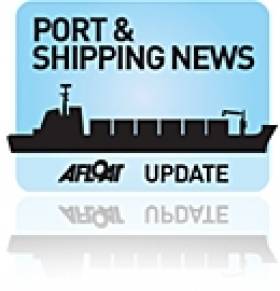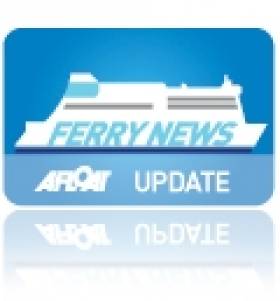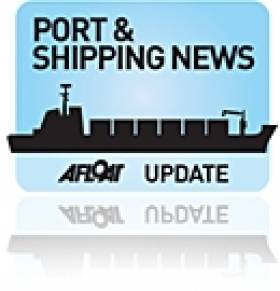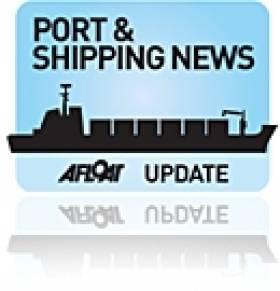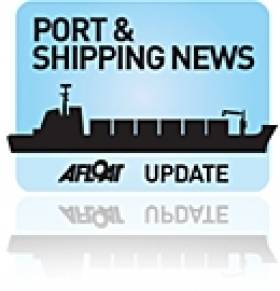Displaying items by tag: Ports & Shipping news
EU Parliament Rejects Controversial Ship-Recycling Levy
#ShipRecycling – The European Parliament has today rejected proposals to introduce a levy on all ships calling at EU ports that would finance a fund to support sustainable recycling of ships.
The proposal had been introduced earlier by Parliament's Committee on Environment, Public Health and Food Safety (ENVI).
Instead, MEPs approved an amendment which calls upon the European Commission to submit by 2015 a legislative proposal for an incentive-based system that would facilitate safe and sound ship recycling.
"We welcome the outcome of the vote", said European Sea Ports Organisation (ESPO) Secretary General Patrick Verhoeven, "We understand the need to create an incentive for shipowners to opt for sustainable recycling, but the side-effects of the levy on the competitiveness of EU ports would have been very negative in terms of traffic evasion, changed ship calling patterns and modal back shift, not to mention the bureaucracy involved with it.
By referring the task to create an incentive-based system to the Commission, there will be time to work out an adequate framework which would match the aim of creating sustainable conditions for ship recycling with respect for international rules and the competitiveness of European ports."
The vote by the EU Parliament is not a final one, it gave a mandate to open negotiations with Council in order to come to an agreement in first reading.
Weak International Demand sees Fall of 10% on Irish Exports
#IrishExPORTS – A weak international demand has seen a fall of 10% on the value of Irish exports during the month of February.
New figures from the Central Statistics Office (CSO) indicate exports decreased by €753 million to €6.65 billion in February compared with the same period last year.
The decline was driven by a 15 per cent (€309 million) fall in exports of medical and pharmaceutical products and an 18 per cent (€286 million) drop in organic chemical exports.
To read more on this story The Irish Times has a report.
#FerryCharter- New Zealand ferry operator Interislander has announced the renewal of the charter lease of Irish Continental Group's (ICG) ferry Kaitaki for another four years, writes Jehan Ashmore.
ICG which are the parent company of Irish Ferries, have chartered out the Kaitaki, (the former Irish Sea ferry Isle of Innisfree) to Interislander since 2005 and where the 22,365 tonnes ro-pax operates on the scenic north-south islands route between Wellington and Picton.
The voyage along the 92km distance long route takes 3 hours to complete across the Cook Strait and has been described as "one of the most beautiful ferry rides in the world".
The agreement by ICG to extend the bare boat charter of Kaitaki, to KiwiRail Limited trading as Interislander is a direct continuation from the current charter, which was due to expire on 30 June 2013 and where over the next four years, the annual charter rate is €3.75m.
Kaitaki which is the Maori translation for Challenger, is the flagship of the Interislander fleet and is the largest passenger ferry (with a 1,650 capacity) operating in New Zealand waters.
She has proved to be a valuable member of the fleet where freight levels have reached of up to 60 trucks transported on nightly sailings and to a lesser extent during day-time sailings. In addition the route provides time sensitive perishable goods deliveries between the islands.
Under the charter terms the agreement also provides for an option for Interislander to extend the charter beyond July 2017 for a further period of three years and at a reduced rate.
Originally the Dutch built ferry started a career as Isle of Innisfree, the first custom-built ferry for Irish Ferries, when introduced onto Dublin-Holyhead service in 1995.
Notably Isle of Innissfree's debut not only marked modernisation but investment confidence on the central corridor route which was part of B&I Line operations until ICG acquired the ailing state-owned company several years previously.
Further business accelerated on the Dublin route which led to a larger newbuild Isle of Inishmore enter service in 1997 and in which displaced the 'Innisfree' to Rosslare-Pembroke Dock route.
In turn 'Inishmore' was replaced and also transferred to the southern corridor route upon introduction of the giant new 'flagship' Ulysses in 2001.
With Isle of Innisfree having no role anymore on the Irish Sea in that year, she was laid up until 2002 when ICG chartered the ferry to P&O Ferries. As the renamed Pride of Cherbourg she ran from her namesake port to Portsmouth.
Following English Channel service the 550 car-capacity ferry then spent a stint in the Baltic Sea as Stena Challenger before heading for her current role in the southern hemisphere.
IMDO Shipping Review: Irish Industry Improves, Asia-Europe Traffic Disappointing, Environmental Shipping Law Intensifies and more…
#Ports&Shipping -The latest IMDO Weekly Shipping Market Review reports that the production of Irish Manufacturing Industries for February 2013 was 0.2% higher than the month before and increased marginally (0.1%) compared to same month last year, latest figures from CSO showed last week.
Container Market: Asia-Northern Europe traffic trade-lane for period December 2012 to January 2013 continued to disappoint, with any improvement being seasonal, as noted by Drewrys. This is unsurprising, given the faltering economic conditions throughout Europe. Westbound cargo from December 2012 to February 2013 increased by 8.7%, compare to the previous three months, September to November 2012.
Shipping Regulations: Environment - Although pollution prevention was one of the original aims of the International Maritime Organisation (IMO), when established in 1948, the level of regulation has intensified in recent years. With even more environmental regulations soon to be implemented, it is coming at a bad time for the shipping world, which is currently facing a major slump, primarily due to oversupply of capacity.
To read more of each of the above stories and other news from the IMDO Shipping Markets Review for Week 14, click HERE to be viewed or downloaded as a PDF
Plans for Bremore Port Project in Deep Water
#BremorePort – It appears that plans for the proposed €350m development of the deep-water port at Bremore, near Balbriggan, Co. Dublin has been effectively shot down under the government's new ports policy blueprint.
The proposed port was to be developed to provide support for Drogheda and Dublin ports.
A government source confirmed that the new policy indicated that "there was no need for new capacity development and that any main developments should be done at Dublin, Cork or Shannon, so it's unlikely that Bremore will be progressed."
The news has been greeted as a blow to the local economy by Balbriggan Chamber of Commerce.For more on this story the NorthCountyLeader.ie has a report.
#ShippingReview – Over the last fortnight, Jehan Ashmore has reported from the shipping scene, where Minister for Transport Leo Varadkar, launched the National Ports Policy which is to radically overhaul commercial ports and the transfer of 'regional' ports to local authorities.
Among the proposed regional ports is Dun Laoghaire, where the harbour which is in the middle of the town is expected to focus on tourism, cruise liners and marine leisure activity.
In regards to larger strategic ports, (noting Port of Cork development update) they are charged with leading the response to national capacity requirements, something that is long overdue because port capacity has not been matching growth in traffic for either unitised and non–unitised cargo.
The policy follows the launch of a 30–year masterplan for Dublin Port Company over a year ago and the launch of the Shannon Estuary masterplan announced in February.
Responding to the National Ports Policy, the Irish Ports Association (IPA) which is the representative body for the Irish ports sector and an affiliate of IBEC welcomed the publication which sets out the policy framework for the future development of the sector.
Amidst snow flurries and gusts up to 34 knots, the cargoship Blue Tune departed Dun Laoghaire Harbour having discharged the final round of fermentation tanks bound for Guinness's St. James's Gate Brewery in central Dublin.
The Antigua and Bermuda flagged vessel, was the third such ship to dock in Dun Laoghaire Harbour since mid-February and the return of cargo ships marks a trade not seen in the port for more than two decades.
Irish Ports Association Welcomes New Ports Policy
#Ports&Shipping- The Irish Ports Association (IPA) has welcomed the publication by Leo Varadkar, TD, Minister for Transport of the new national ports policy which sets out the policy framework for the future development of the sector, writes Dredgingtoday.com
IPA which is the representative body for the Irish ports sector and an affiliate of IBEC whose Head of Trade and Transport Policy, Pat Ivory said: "Ireland's commercial ports are key pieces of national and regional infrastructure, which will play a key role in economic recovery by facilitating both trade and tourism. It is essential that we have coordinated action across Government departments in implementing the strategy.
"It is important that the alignment of Ports of Regional Significance with local authorities be undertaken in a way that preserves the commercial focus of the ports' operations. This will require harnessing the necessary commercial expertise at local authority level and a clear decision-making framework to be developed to facilitate future port development."
#Ports&Shipping -The latest IMDO Weekly Shipping Market Review reports that in the Irish Shipping sector there are plans under the New Ports Policy to radically overhaul Ireland's commercial ports and give Government a more hands-on role in the maritime ports sector were announced last week by the Department of Transport, Tourism & Sport.
The new National Ports Policy aims to harness the potential of every port in Ireland. Shareholders will be encouraged to take an activist approach to ensure the State gets best value from these crucial facilities, whether that shareholder is the Government or the local authority.
Container Market: Ultra-large containership deliveries slowed in the first few months of the year, sparking claims of a lower than forecast delivery rate for 2013, Lloyd's Loading List relayed last week. The latest report from shipbroker Braemar Seascope shows that only three containerships with capacity of 10,000 TEU or larger have been delivered in the first two months of the year. This compares with eight vessels of more than 10,000 TEU delivered during the last two months of 2012.
Shipping Industry: Overall confidence levels in the shipping industry recovered to their highest level for two years in the three months ended February 2013, according to the latest survey from Moore Stephens. There was improved expectation of freight rate increases over the next twelve months, particularly in the dry bulk sector, and greater likelihood of new investment in the industry.
To read more of each of the above stories and other news from the IMDO Shipping Markets Review for Week 13, click HERE to be viewed or downloaded as a PDF
Snow Flurry Send off as Guinness Tank Cargoship Sets Sail
#GuinnessTankShip – Amidst snow flurries and gusts up to 34 knots, cargoship Blue Tune departed Dun Laoghaire Harbour today, having discharged a final round of fermentation tanks yesterday for Guinness, writes Jehan Ashmore.
The vessel registered in St. John's in Antigua and Bermuda, was the third vessel to dock in Dun Laoghaire Harbour since mid-February. These vessels represented the return of cargo ship activity, a trade not witnessed in the port for more than two decades.
Combined the 'project' cargo consisted of three batchs of large stainless steel fermentation tanks weighing up to 30 tons each. They are to be installed as part of a €153m plant upgrade at the Guinness St. James's Gate Brewery facility close to central Dublin.
As the 3,845 tonnes Blue Tune headed out through the harbour mouth she set a course for the North Burford Buoy and then the 2010 built vessel veered for the Kish Bank bound for Cardiff.
At the same time Stena Line's HSS Stena Explorer was making an inbound sailing from Holyhead having rounded the South Burford Buoy.
IMDO Shipping Review: Irish Economy Highest Since Pre-Crisis, Containers Volumes Down, Chinese Ramp Up LNG Orders and more…
#Ports&Shipping -The latest IMDO Weekly Shipping Market Review reports that total exports in the Irish Economy last year hit their highest level ever at 16 per cent above the pre-crisis high, Enterprise Minister Richard Bruton has said. Mr Bruton said total exports were now at €182bn, after figures from the CSO showed a record trade surplus of €46bn.
Key Ports throughput in the Northern European Container Market witnessed a slight rise in throughput between December and January 2013, however, a year-on-year comparison shows total volume down 3.5 per cent, as noted by Drewry's Container Insight Weekly.
In the LNG Markets, there is rapid Chinese import demand as a newbuild order for 10 LNG carriers is in line with China Inc's strategy to ramp up its gas carrier ownership, as it becomes a more dominant presence in the industry. Japan, the industry's top importer is still way ahead of China, with annual imports of 87 million tonnes, compared to China's yearly imports of 15 million tonnes.
To read more of each of the above stories and other news, they can be viewed or downloaded as a PDF from the IMDO Shipping Markets Review for Week 12.


























